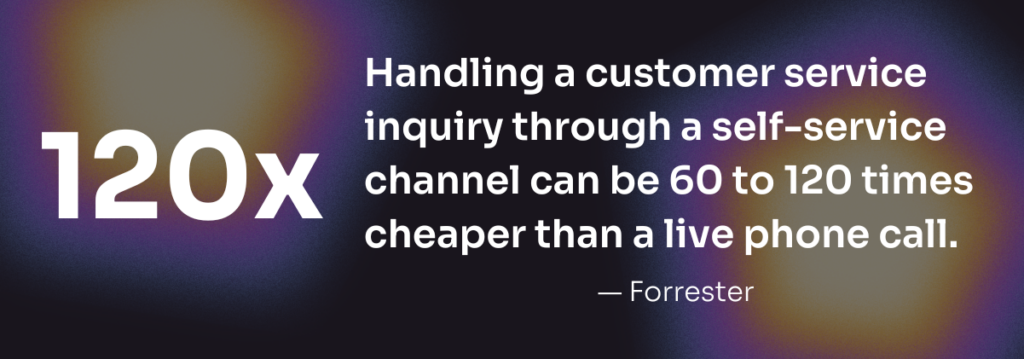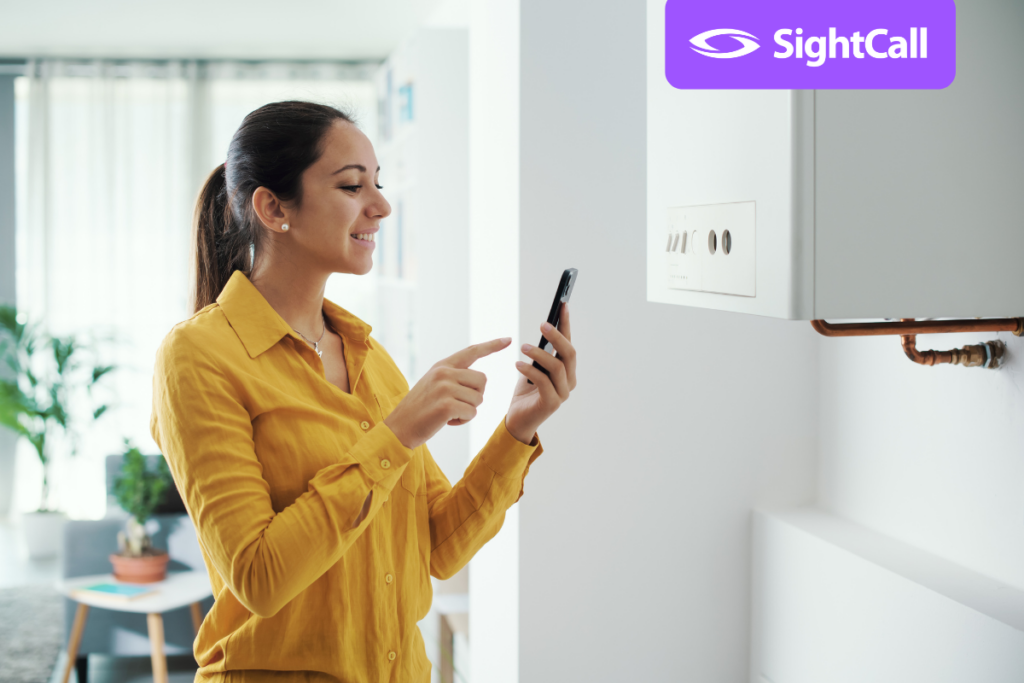As a contact center leader, the last thing you want to hear is that more than half of consumers would rather help themselves.
But that’s where we are.
We live in a world of convenience, driven by technology.
There are plenty of numbers online showing more than 60% of customers prefer the DIY option. And an oft-cited study from The Harvard Business Review adds insult to injury by noting that 81% of people attempt to resolve an issue on their own before reaching out to a representative.
This puts contact centers in an awkward position.
After all, what is customer support without the support?
What are we supposed to tell the dozens (or hundreds, or THOUSANDS) of human beings who are standing by to help?
If everybody wants to resolve their own issues, what are we supposed to tell the agents?

Welcome to the Self-Service Revolution
For starters, you can tell them to buckle up and settle in.
Self-service is the new normal.
The revolution is here and it’s not going anywhere anytime soon.
Customers have been using technology to sort out their own questions for some time now, getting the help they need without always having to chat with a support agent.
And it’s a trend propelled by a growing consumer preference for swift, effective, and accessible solutions. Thanks to the boom in e-commerce, smartphone apps and intuitive UX, the buying public expects instant gratification at every step.
Self-service comes in many forms, leveraging a wide range of tools and software platforms, including automated systems like chatbots and IVR, self-service web portals, comprehensive knowledge bases, and mobile applications, each designed to streamline customer interactions.
Once upon a time, high-tech conveniences like virtual check deposits, remote video support and real-time shipment tracking were once differentiators. Today they’re table stakes.
Customers demand transparency, ease-of-use and speed.
And companies who give it to them are reaping the rewards.
This paradigm shift offers massive mutual benefits for businesses and consumers. Companies minimize operational costs and optimize human resources and customers get immediate, round-the-clock service and flexibility.
And some of the most positive side effects can impact agents.
Boosting Agent Efficiency by Empowering Customers
Something exciting happens when you make it easy for customers to resolve simple queries and transactions. The flow of routine, repetitive tasks and requests that used to clog the gears of high-traffic call centers eases up.
Instead of agents using valuable time to collect basic information (name, address, etc), pre-call solutions can do it automatically. Simple software workflows can prompt customers to submit that essential information, scan barcodes and serial numbers and provide an overview of their issue.
Once the call is connected, the agent and customer can get straight to solving the problem.
Self-service options can automate any simple sequence or service process that agents find themselves faced with over and over.
It’s become a running joke in the IT world, but sometimes a computer ISN’T plugged in. Sometimes turning it off and then on again DOES fix the problem.
Self-service can save your agents from repeating those more remedial requests. It can help them allocate more time and resources to complex, high-value interactions that require human empathy, judgment, and expertise.
It’s a win-win because agents get to engage in more rewarding and meaningful work and customers get a smoother and more efficient service experience.
Beyond the Switch: Crafting Smart Self-Service for Smoother Journeys and Real Results
The shift doesn’t just happen with the flip of a switch.
To really nail self-service, it’s all about creating easy-to-use tools that are packed with solid info, plus keeping a human on standby for when things get tricky.
We’ve all been frustrated by an eager chatbot who promises to work miracles but then answers every question with a link to the support page.
Waiting on hold has never been fun and nobody likes getting lost in an IVR maze. And these days, friction has become a four-letter word.
The idea isn’t to hand customers answers or instructions and wish them luck. The goal is to help them get as far as possible towards a solution and be there when (and if) they need help to cross the finish line.
When executed well, a self-service strategy can create a virtuous cycle that improves almost every aspect of your customer service operation.
With the growing popularity of self-service, traditional metrics of call center efficiency, such as Average Handling Time (AHT) and First Call Resolution (FCR), are evolving to fit new definitions of customer service effectiveness.
There’s a shift in focus to metrics that encompass the full customer journey across channels. This includes tracking the rate at which self-service tasks are completed, how many issues are resolved without needing an agent, and customer satisfaction scores (CSAT) specifically related to self-service interactions.
We’re all looking closer at Net Promoter Score (NPS) and Customer Effort Score (CES), which underscores a shift from purely operational efficiency towards a more holistic view of customer engagement and success.

Elevating the Role of Agents: Transforming Customer Service from Routine to Remarkable
Integrating self-service options helps businesses significantly shift the nature of work for their agents, moving them away from routine inquiries to concentrate on more complex and nuanced issues.
Straightforward tasks such as account inquiries, payment processing, and basic troubleshooting, traditionally consumed a substantial portion of an agent’s time.
When customers leverage self-service for these simple tasks, agents are free to focus their skills on situations that require deeper insights, personalized attention, and problem-solving abilities.
This leads directly to better service and higher job satisfaction among agents.
It reduces monotony, enhances the sense of achievement and helps customer support professionals develop and utilize a skill set that reduces burnout.
Three Ways Self-Service Enhances Agent Efficiency
1. By Reducing Call Volumes
Self-service options, like automated chatbots and online knowledge bases, deflect routine queries by providing instant responses to common customer questions and issues to act as a first line of support.
2. By Increasing Resolution Speed for Complex Issues
Agents can better understand the nuances of complex queries or escalate issues when necessary, and provide customized solutions that address the root of the problem rather than offering quick, superficial fixes. Customers receive more accurate, comprehensive, and personalized assistance.
3. By Improving Customer Preparation
Customers who initially engage with self-service options tend to be better prepared when they eventually need to speak with a live agent, making these interactions more efficient. The preliminary self-service interaction acts as a bridge, ensuring that both customer and agent are on the same page from the outset of their direct communication.
Navigating Challenges to Enhance Customer Experience with Self-Service
Adopting self-service comes with challenges.
Integrating self-service technologies into existing customer service ecosystems can be complex. They must offer a cohesive customer experience across all channels, which can be difficult given legacy systems and various software platforms.
Additionally, maintaining the quality of self-help resources such as FAQs, knowledge bases, and chatbots is essential for these tools to be effective. This involves not only the initial creation of content but ongoing updates to ensure accuracy and relevance.
But the effort pays real dividends when it comes to efficiency.
The modern customer service landscape is making it clear that self-service options are crucial for meeting the contemporary consumer’s expectations for speed, convenience, and autonomy.
If your contact center tech toolbox has an empty spot where self-service should be?
Consider how these technologies can fit into your current customer service strategy and the needs of your customer base. Take a closer look at software and solutions that align with your business goals and reach out for professional advice to kickstart your self-service revolution.
After all, the more you help your customers help themselves, the more it helps you.



